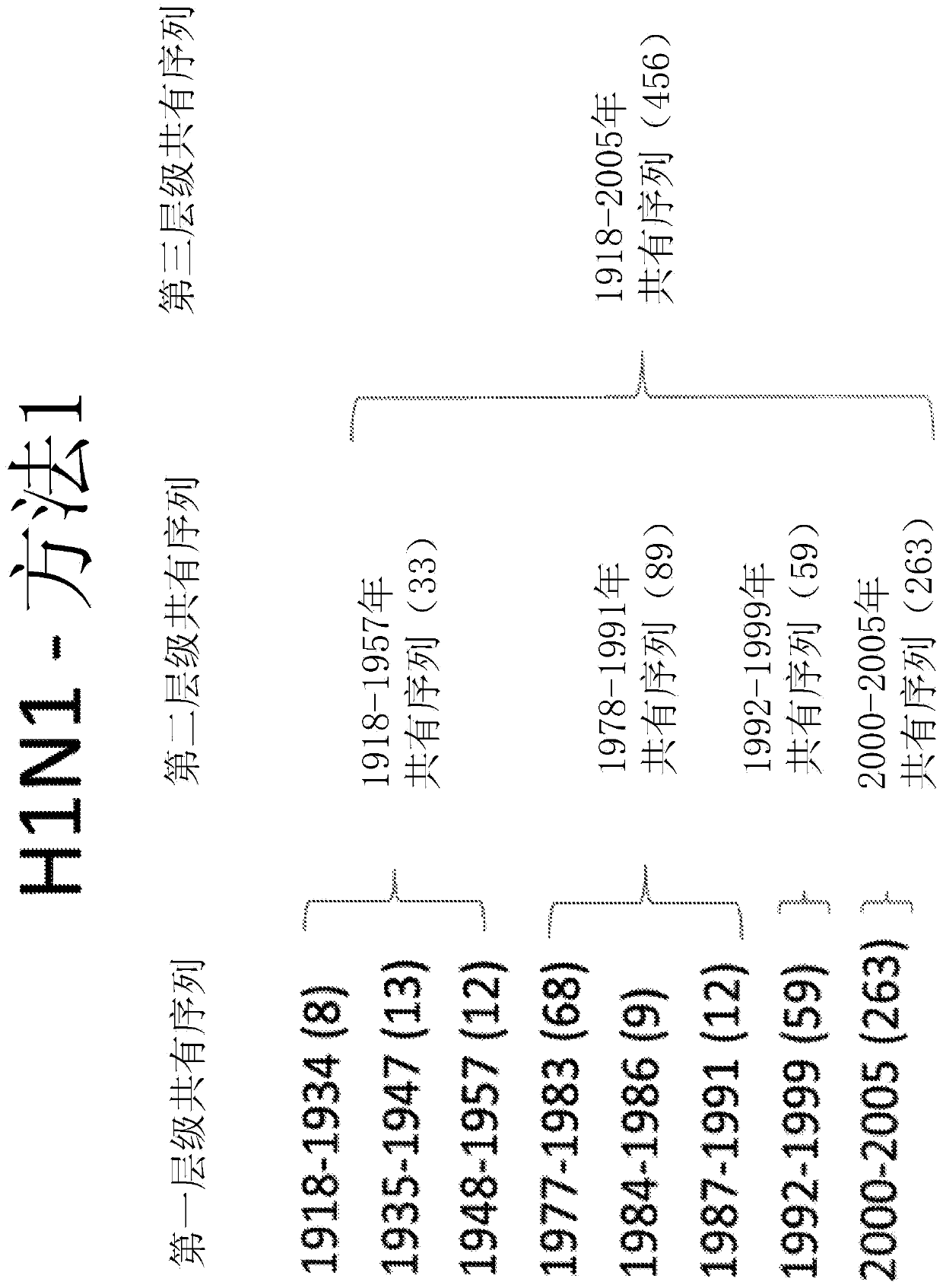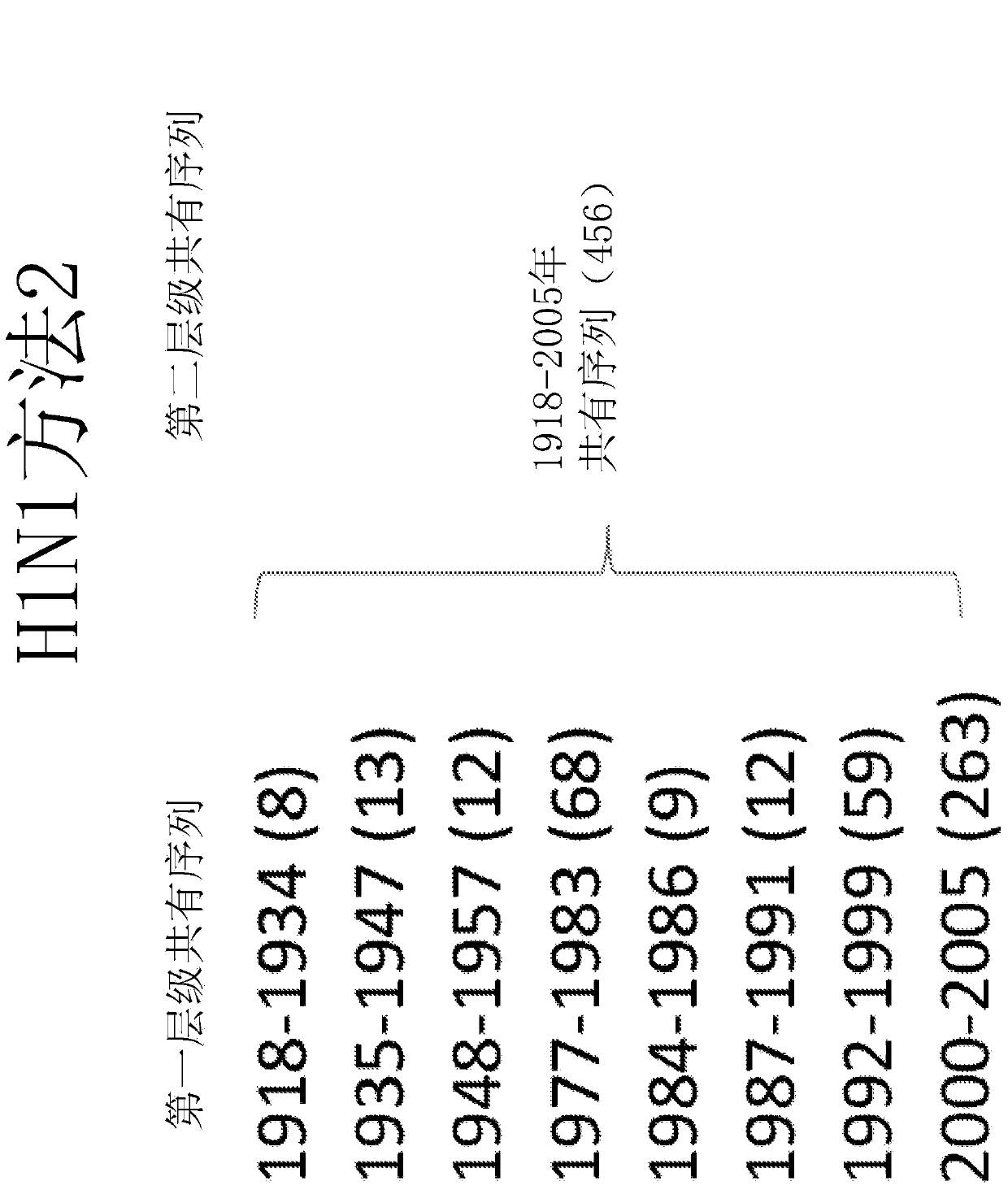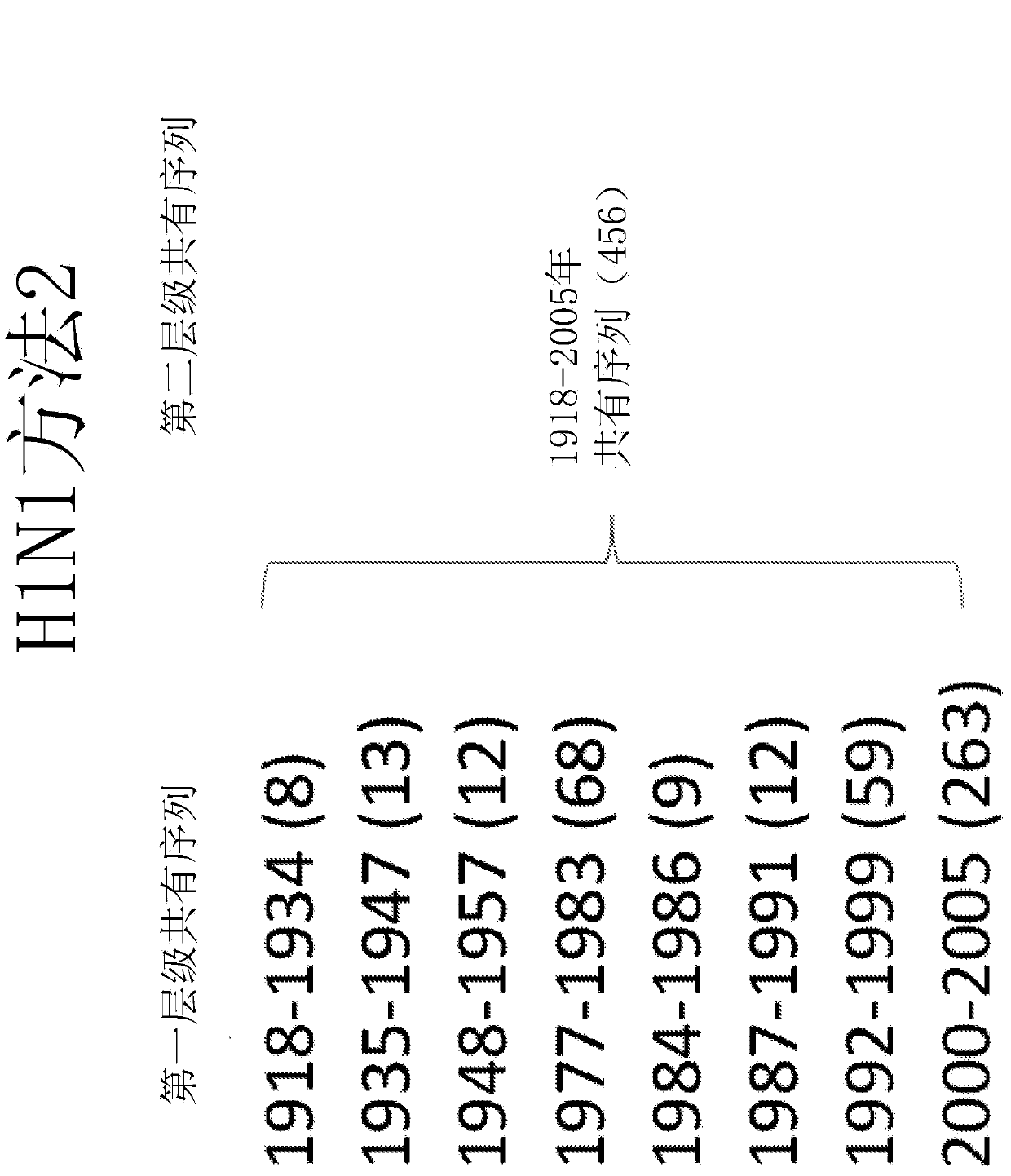Computationally optimized broadly reactive antigens for H1N1 influenza
A technology of influenza and influenza virus, applied in the direction of virus antigen components, antisense single-stranded RNA virus, application, etc., can solve problems such as increasing the risk of infection
- Summary
- Abstract
- Description
- Claims
- Application Information
AI Technical Summary
Problems solved by technology
Method used
Image
Examples
Embodiment 1
[0156] Example 1: Generation of COBRA sequences for H1N1 influenza
[0157] Download the influenza A H1N1HA amino acid sequence from the NCBI Influenza Virus Resource Database. H1N1HA proteins from 1134 isolates from 1918-2011 were used to generate consensus sequences. Eleven different consensus sequences (SEQ ID NO: 1-11) were generated using the following method:
[0158] 1. COBRA Method 1 (1918-2005)
[0159] Use sources from 1918-1934 (8), 1935-1947 (13), 1948-1957 (12), 1977-1983 (68), 1984-1986 (9), 1987-1991 (12) , 1992-1999 (59) and 2000-2005 (263) isolates were sequenced according to the date of isolation (456), and then eight first consensus sequences were generated. By grouping the first consensus sequence by date, 4 second consensus sequences are generated, such as figure 1 shown. By aligning the four second consensus sequences, a final consensus sequence (third-level consensus sequence; SEQ ID NO: 1) was generated.
[0160] 2. COBRA Method 2 (1918-2005)
[...
Embodiment 2
[0181] Example 2: Preparation of influenza VLP and use of influenza VLP for immunization
[0182] The following methods can be used to generate and characterize influenza VLPs comprising optimized HA. Exemplary methods of immunizing mice, ferrets and macaques are also described below (see also, Giles and Ross, Vaccine 29(16):3043-3054, 2011).
[0183] vaccine preparation
[0184] 293T cells were transiently transfected with plasmids expressing M1, NA and optimized HA and incubated at 37°C for 72 hours. The sequences encoding M1, NA and HA can be codon optimized for expression in mammalian cells. The supernatant was collected, centrifuged at low speed to remove cell debris, and vacuum filtered through a 0.22 μm sterile filter. VLPs were purified by ultracentrifugation (100,000 x g through 20% glycerol, weight / volume) at 4°C for 4 hours. The pellet was then resuspended in PBS, pH 7.2, and stored in single-use aliquots at -80°C until use. Using Micro BCA TM Total protein co...
Embodiment 3
[0196] Example 3: Analysis of HA by COBRA H1N1 Method 1
[0197] This example describes the results that vaccination of mice with COBRA H1N1 influenza VLPs induced significant serum antibody titers to HAI and also shows that in vitro translation of COBRA H1N1 HA results in expression of the protein at the expected molecular weight.
[0198] HAI serum antibody titer
[0199] To assess whether influenza viruses containing COBRA Approach 1 H1N1 HA were able to elicit antibody responses in infected animals, VLPs comprising the COBRA Approach 1 HA (SEQ ID NO: 1 ) were generated as described in Example 2. The mice were inoculated with the VLP, and the serum was collected at the 3rd, 5th, 8th and 12th week after infection to determine the serum antibody titer of HAI. Antisera were tested against seasonal H1N1 influenza virus A / New Caledonia / 20 / 1999. Such as Figure 6 As shown, the HAI titer was detected at the 5th week after infection, and the HAI titer increased at the 8th and 12...
PUM
 Login to view more
Login to view more Abstract
Description
Claims
Application Information
 Login to view more
Login to view more - R&D Engineer
- R&D Manager
- IP Professional
- Industry Leading Data Capabilities
- Powerful AI technology
- Patent DNA Extraction
Browse by: Latest US Patents, China's latest patents, Technical Efficacy Thesaurus, Application Domain, Technology Topic.
© 2024 PatSnap. All rights reserved.Legal|Privacy policy|Modern Slavery Act Transparency Statement|Sitemap



